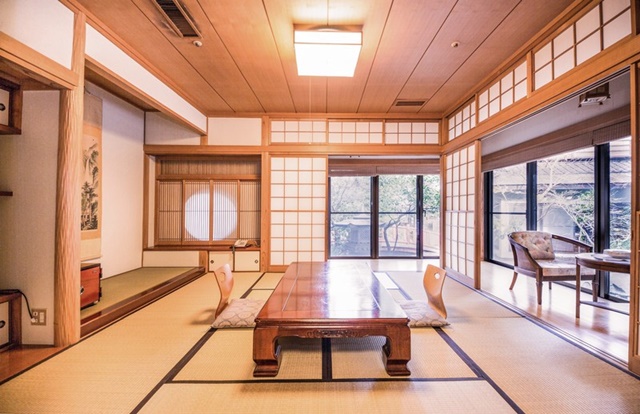A ryokan is not just a place to sleep.
It’s an experience — a window into Japan’s harmony, simplicity, and hospitality.
From tatami floors and futon bedding to kaiseki meals and onsen baths,
every detail tells a story of tradition.
When you stay at a ryokan, time slows down.
You begin to feel Japan’s rhythm — quiet, graceful, and sincere.
A Glimpse into History
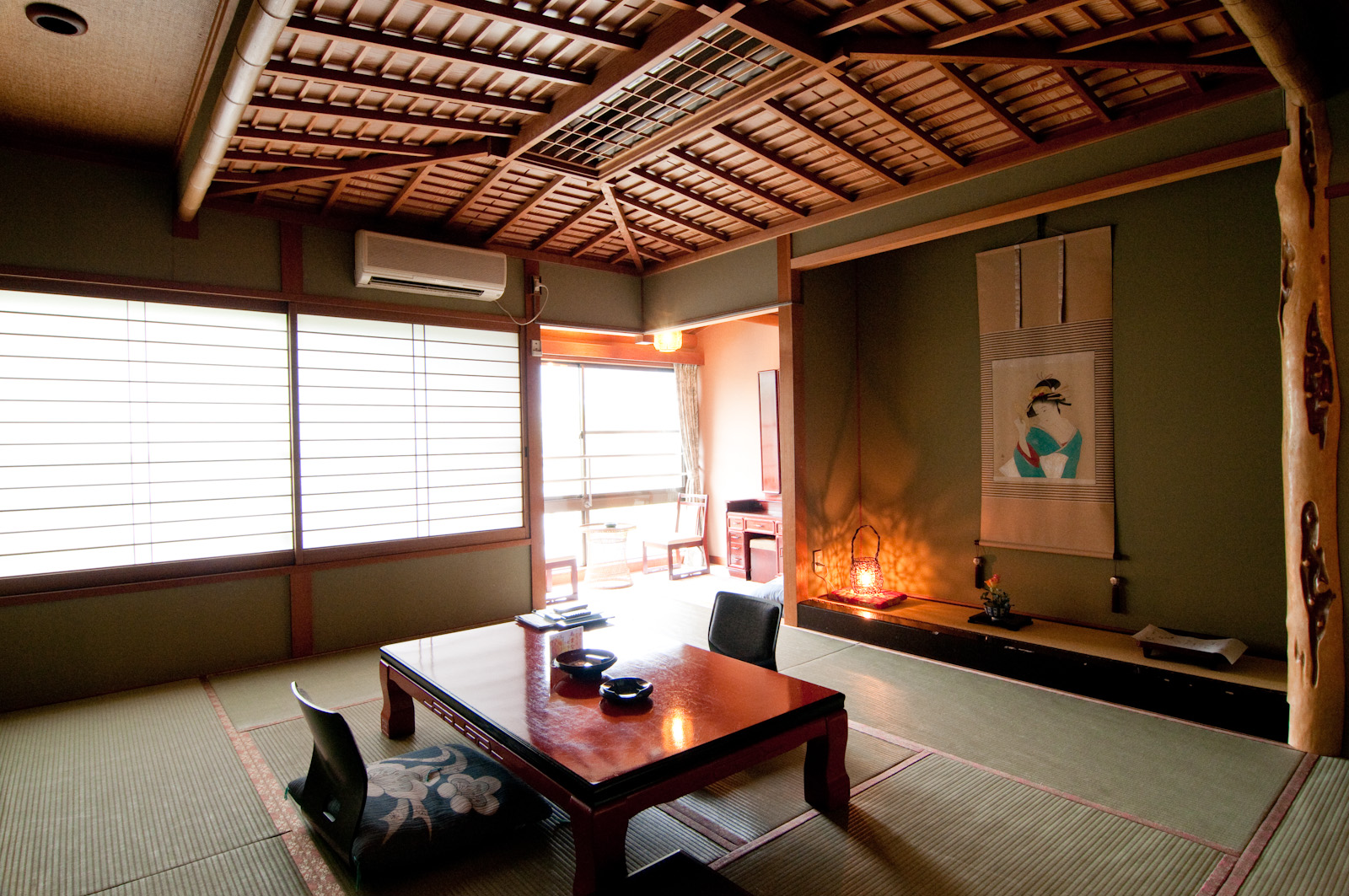
Ryokans began in the Edo period (1603–1868).
They were simple inns for travelers on long journeys.
Even now, their essence hasn’t changed.
A warm welcome, local food, and a peaceful atmosphere remain at the heart of every stay.
Modern ryokans may have Wi-Fi and air conditioning,
but their soul is still wrapped in omotenashi — heartfelt hospitality.
Inside a Ryokan: Tatami, Tea, and Tranquility
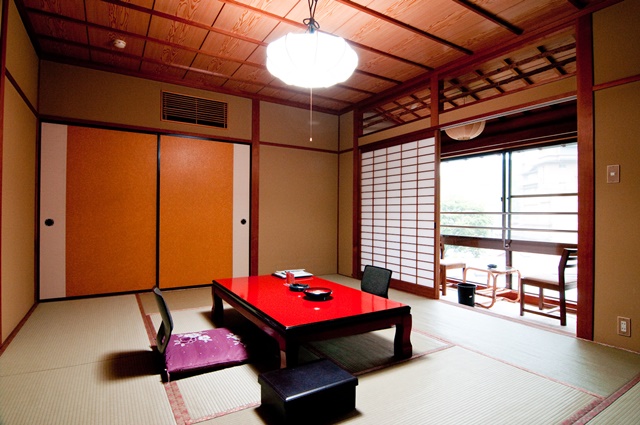
Guest rooms follow the classic Japanese design:
tatami floors, sliding shoji doors, and a low table with a tea set.
At night, futon bedding is laid out for you.
Morning sunlight filters softly through the paper screens — pure calm.
Just like in Japanese homes, guests remove their shoes before entering.
It’s a simple act that keeps the space clean and shows respect.
(Learn more: “Why Do Japanese People Take Off Their Shoes?”)
Many rooms have a veranda overlooking gardens or mountains.
Sip green tea, listen to the wind — that’s the ryokan’s quiet magic.
Meals at a Ryokan
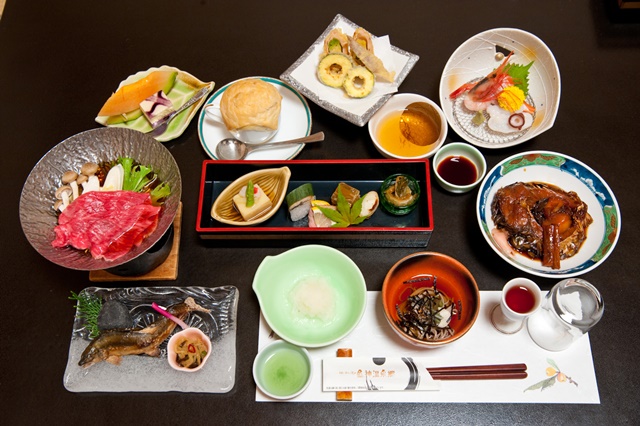
Kaiseki — The Art of Seasonal Dining
Meals are part of the experience.
Dinner and breakfast are usually included,
featuring kaiseki ryori — a multi-course meal of seasonal dishes.
Each course is served fresh and perfectly timed.
Being punctual is part of the etiquette.
You’ll taste the region itself —
from miso soup and sashimi to grilled fish and mountain vegetables.
Where Meals Are Served
Some ryokans serve meals in a shared dining room.
Others bring them to your private room.
Either way, the goal is the same:
to enjoy slowly, quietly, and with gratitude.
Bathing: Relaxation and Purity
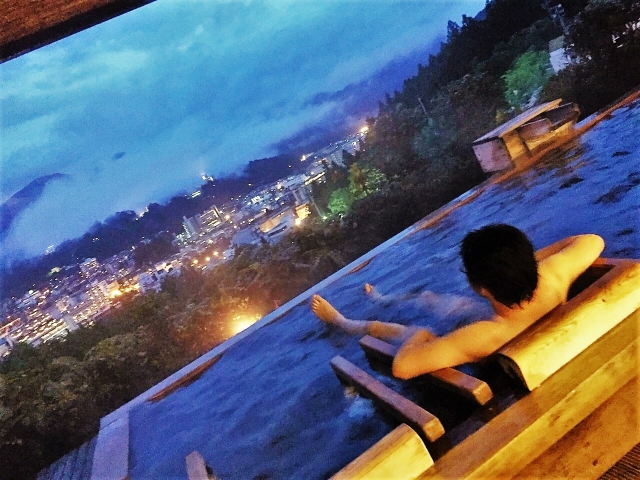
Onsen — Japan’s Natural Hot Springs
Most ryokans have communal baths.
Many use natural onsen water from nearby hot springs.
The minerals soothe tired bodies and calm busy minds.
Soaking under the open sky feels almost spiritual.
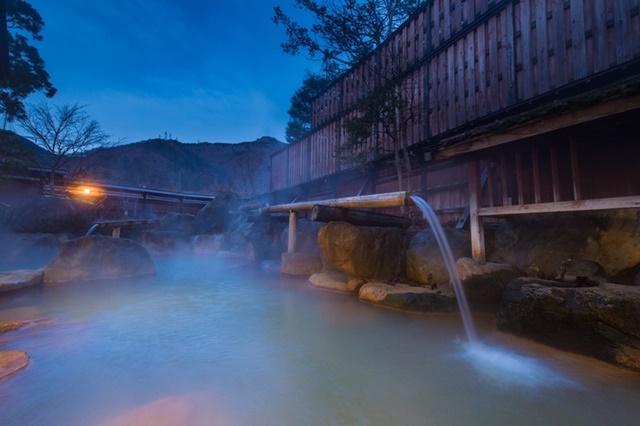
Bathing Etiquette
Before entering, wash your body completely.
Bathing is done nude and usually separated by gender.
Inside the bath, stay quiet —
it’s a time to relax, not to talk loudly.
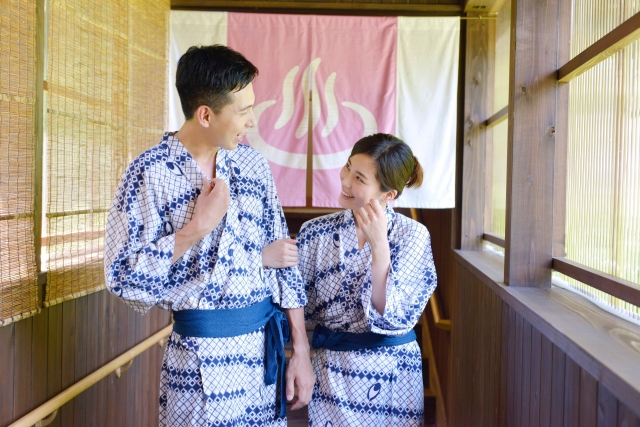
Afterwards, wear a yukata, a light cotton kimono.
You can wear it around the inn or even to dinner.
It’s part of the feeling of equality and ease.
Cost and Types of Ryokan
Ryokans come in all styles.
Some are small family inns with just a few rooms.
Others are luxury resorts with private baths.
Typical prices range from ¥15,000–25,000 per person per night, meals included.
Luxury stays can reach ¥50,000,
while simple city ryokans may start from around ¥6,000.
It’s not cheap —
but even one night gives you a memory that lasts a lifetime.
The Spirit of Omotenashi
Every moment in a ryokan reflects omotenashi.
Shoes neatly aligned at the entrance.
Futons arranged with care.
Seasonal flowers placed quietly in your room.
It’s kindness without words —
a hospitality that expects nothing in return.
In a fast world, the ryokan reminds us:
true comfort lives in simplicity.
Conclusion
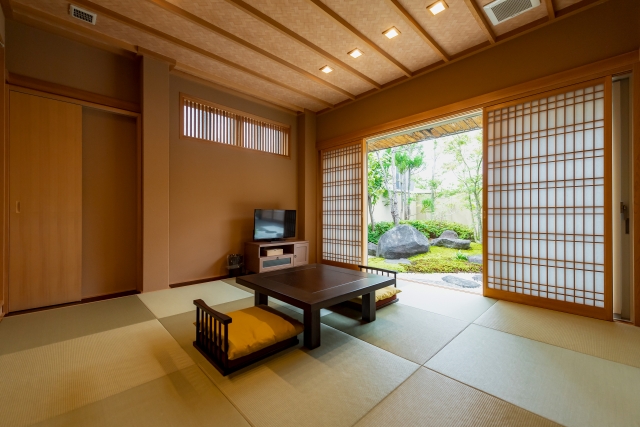
Staying at a ryokan isn’t just accommodation.
It’s a gentle journey into Japan’s living culture.
You take off your shoes.
You sip green tea.
You breathe in peace.
Each gesture — small, deliberate, graceful —
connects you with Japan’s timeless way of harmony.

